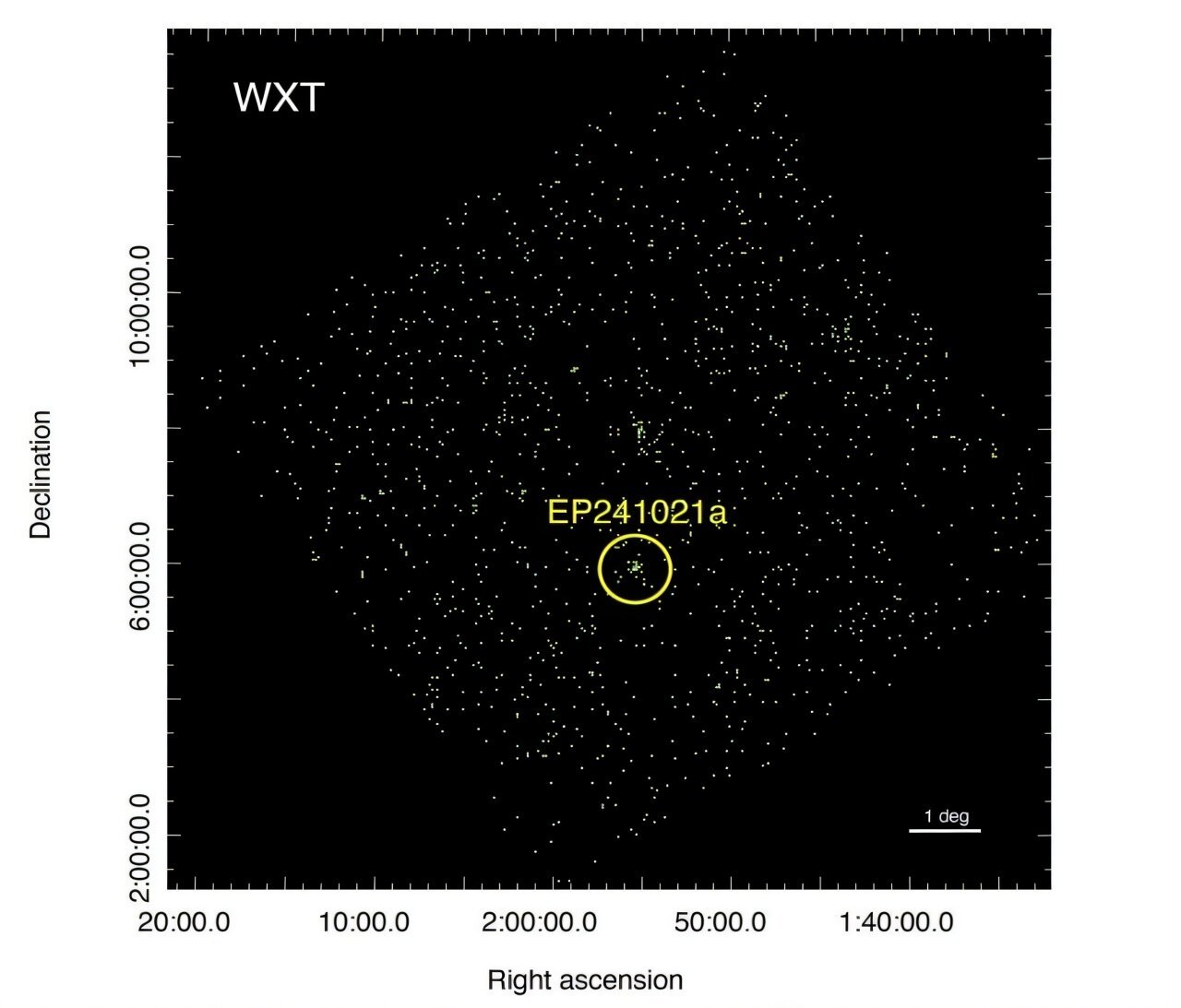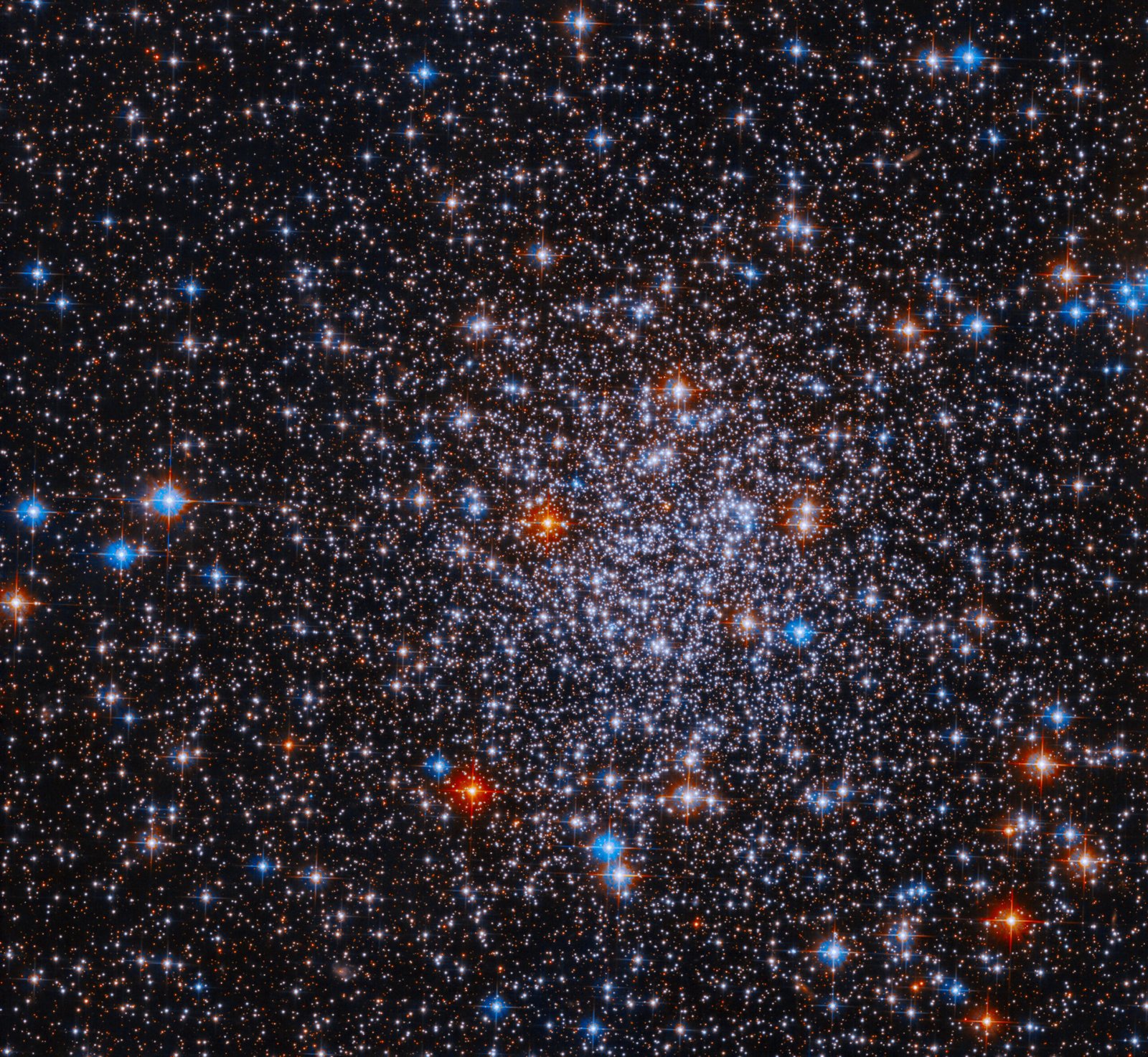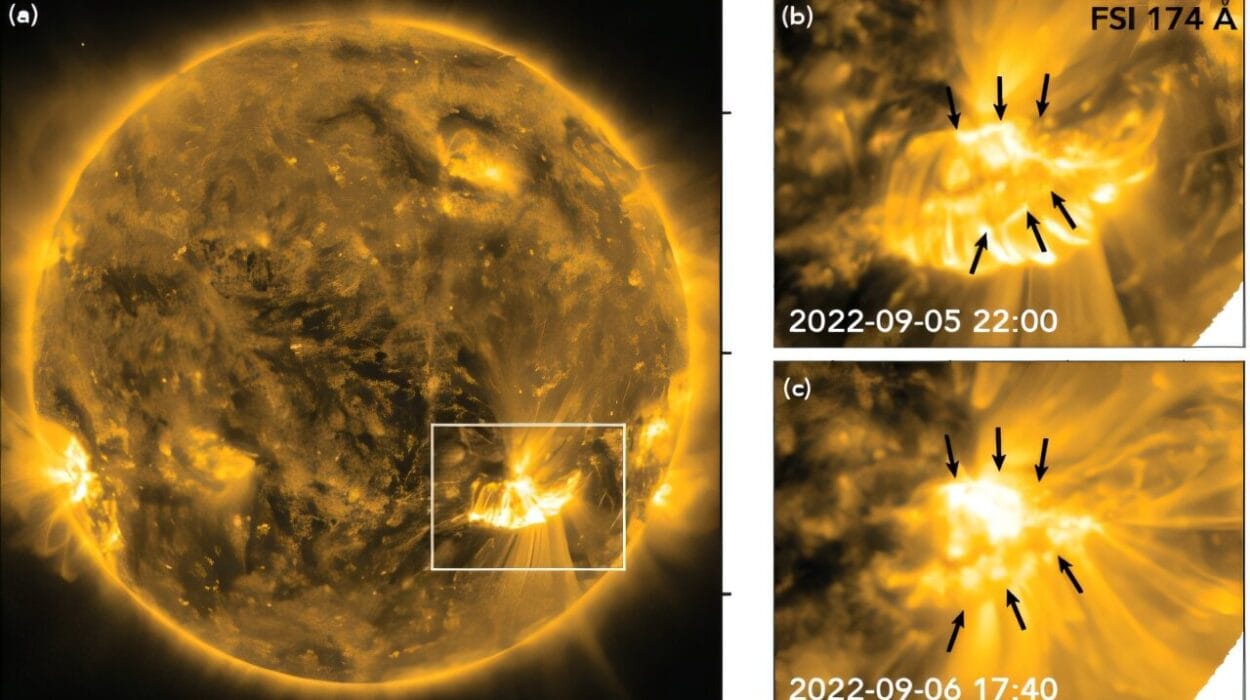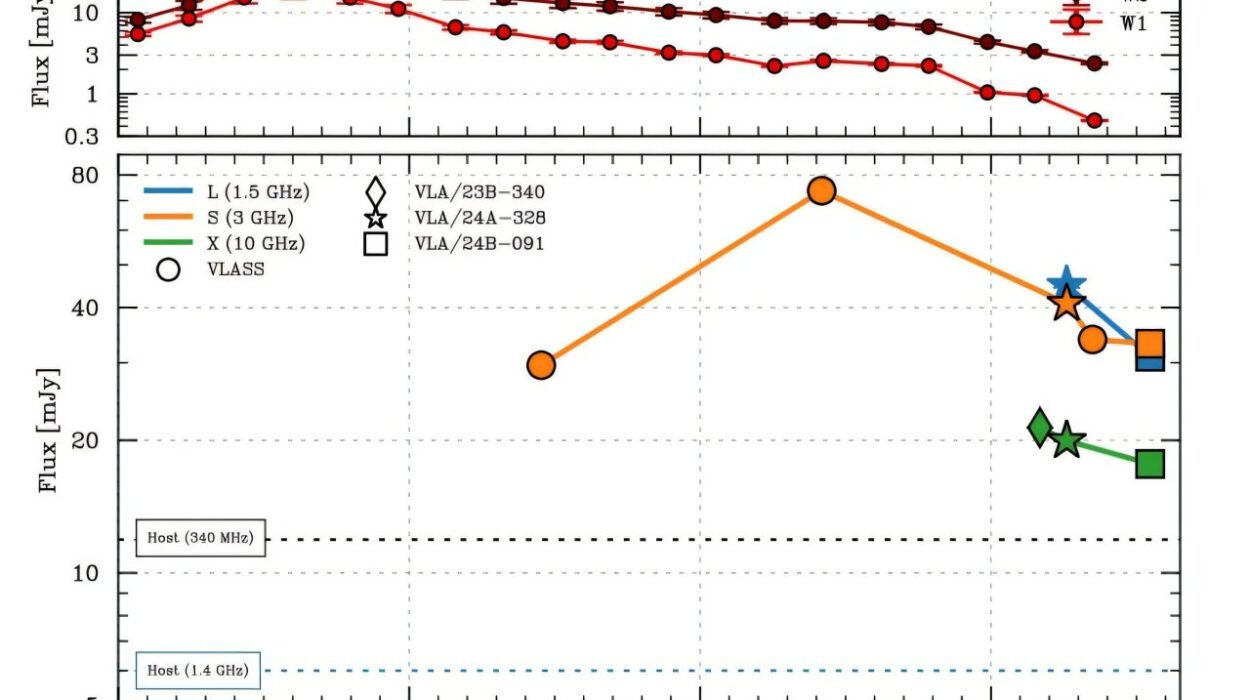In the ever-unfolding drama of the cosmos, where titanic energies collide in silence and the birth and death of stars leave echoes across spacetime, a new celestial enigma has emerged. This time, it’s a peculiar burst of X-rays, unlike any astronomers have seen before.
Using the powerful new Einstein Probe (EP), an international team of astronomers has uncovered what appears to be one of the strangest, most long-lasting fast-evolving X-ray transients (FEXTs) ever detected. Dubbed EP241021a, this ephemeral flare lit up the X-ray sky on October 21, 2024, and has since defied nearly every expectation about how such bursts behave. The team’s findings, led by astrophysicist Xinwen Shu of Anhui Normal University in China, were published on May 12 in a preprint paper on arXiv.
The Fast and the Luminous: What Are X-ray Transients?
To appreciate just how odd EP241021a is, it helps to understand the strange category it belongs to.
Fast-evolving X-ray transients are some of the universe’s most fleeting fireworks—brief but brilliant bursts of soft X-ray light that last anywhere from a few seconds to several hours. Their origins remain one of modern astrophysics’ most tantalizing puzzles. Some may be explosive events like supernova shock breakouts, while others might be linked to long gamma-ray bursts (GRBs), or even magnetar flares, which involve exotic stellar remnants with magnetic fields a quadrillion times stronger than Earth’s.
Typically, FEXTs come and go quickly. They are bright but brief, intense but evasive. That’s why astronomers are stunned by the sheer longevity and complex behavior of EP241021a. It’s not just a fleeting flash—it’s a cosmic performance with an encore that lasted over two and a half months.
Einstein Probe: A New Eye on the X-ray Sky
The discovery would not have been possible without the Einstein Probe, also known as the Tianguan telescope, a Chinese-led international space mission launched in early 2024. Its mission is bold: to catch the universe’s most fleeting high-energy phenomena in the act.
Equipped with a state-of-the-art Wide-field X-ray Telescope (WXT), EP scans huge swaths of the sky in soft X-rays, capable of detecting rapid flashes that older observatories might have missed. More importantly, it can continuously monitor how these flares evolve—tracking their light curves, spectral features, and the fadeout into afterglow, across time scales never before charted.
And on October 21, it struck gold.
The Enigma Named EP241021a
What the Einstein Probe detected that day was an intense flare that blazed for 92 seconds, releasing energy at a mind-bending luminosity of around 10¹⁵ erg/s—a quindecillion in scientific notation. For comparison, that’s roughly 100 trillion times the total energy output of the Sun in a single second.
But this wasn’t just a flash in the cosmic pan.
Follow-up observations, both from space-based X-ray instruments and ground-based optical and radio telescopes, revealed a shocking detail: the X-ray emission lingered. For the first 7 days, the emission stayed remarkably constant—a “plateau” phase that is almost unheard of in FEXTs. Then, for 30 days, the flare faded steadily before finally dropping below detectability around day 79.
What’s more, optical light was detected just 1.8 days after the initial X-ray burst. Then, radio waves joined the party around 8.4 days later—each wavelength revealing another layer of this astrophysical onion.
“Such a long duration of X-ray emission has not been seen in any other extragalactic FEXTs to date,” Shu and colleagues wrote. “It challenges our existing models and opens new possibilities for what drives these extraordinary phenomena.”
Multi-Wavelength Mayhem: A Cosmic Whodunit
What could produce such a weirdly choreographed light show, stretching across the electromagnetic spectrum?
The team explored a variety of explanations but ultimately zeroed in on two main contenders: a magnetar-powered event, and a jetted tidal disruption event (TDE).
A magnetar engine involves a newly born neutron star spinning at millisecond speeds with an immense magnetic field. These cosmic dynamos can, under the right conditions, inject energy into surrounding matter for extended periods—perhaps explaining the plateau phase. But even magnetars typically don’t emit X-rays for as long as EP241021a did, or with such consistency.
The second possibility is even more dramatic. In a jetted tidal disruption event, a star strays too close to a supermassive black hole, gets torn apart by its gravity, and the debris forms a hot, swirling accretion disk. If that disk launches a relativistic jet pointed at Earth, we might see it as a sudden, bright transient across X-rays, optical, and radio. Such events have been observed before—but again, none quite like this.
“Neither model perfectly fits all the data,” the researchers admit, “suggesting that EP241021a might be revealing a new, hybrid mechanism—or a flavor of cosmic cataclysm we’ve never fully characterized before.”
Unprecedented and Unforgettable
The discovery is as scientifically significant as it is baffling. Not only does EP241021a push the boundaries of what we expect from fast X-ray transients, but it also showcases the capabilities of the Einstein Probe and the importance of multi-wavelength, time-resolved observations.
“This event shows us just how dynamic and unpredictable the universe can be,” said one astronomer involved in the project. “We thought we understood FEXTs, but EP241021a has shown that we’re just scratching the surface.”
The flare’s hard X-ray spectrum, measured with a photon index of 1.8, further complicates the picture. Harder spectra typically suggest more energetic processes at play—possibly relativistic jets or high-energy particle acceleration—hinting that whatever caused this event may be more violent than previously recorded transients.
The Future of Transient Astronomy
EP241021a is just one of dozens of FEXTs now cataloged by the Einstein Probe, and it likely won’t be the last to surprise astronomers. As EP continues scanning the skies, the data it collects could finally help decode the origins of these elusive cosmic flashes.
Astronomers are especially hopeful that coordinated observations—from X-ray satellites to ground-based optical and radio observatories—will become standard practice for transient detection. The multi-wavelength approach used in EP241021a’s case is rapidly becoming the gold standard in understanding transient astrophysics.
And with the growing field of time-domain astronomy, where telescopes no longer just stare at static points in space but track change itself, events like EP241021a are poised to reshape our understanding of how the universe behaves in real-time.
A Universe That Still Surprises
In a field where black holes, supernovae, and cosmic jets are studied daily, it’s easy to think we’ve seen it all. But nature continues to surprise us. EP241021a is a reminder that the cosmos holds secrets we haven’t even begun to imagine. Each new flare, burst, or ripple in spacetime is a clue—a line in a story we’re only beginning to read.
So what is EP241021a, really? A hyperactive magnetar? A jetted black hole feast? Or something else entirely?
For now, it remains a cosmic riddle—a bright, fleeting whisper from deep time, caught in the act by a vigilant new eye on the sky.
But thanks to the Einstein Probe and the growing global collaboration of astronomers, we’re listening more carefully than ever.
And the universe is speaking.
Reference: Shu Xinwen et al, EP241021a: a months-duration X-ray transient with luminous optical and radio emission, arXiv (2025). DOI: 10.48550/arxiv.2505.07665






